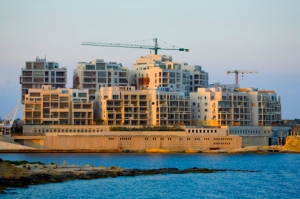The following extract is taken verbatim from Chapter 14 of AD’s Electoral Manifesto
Development and Land Use.
The results of the 2011 Census have not yet been published. It is however very clear that when the result is known the number of vacant residential properties shall be well in excess of the 53,000 vacant dwellings documented in the 2005 Census. This clearly shows how the building industry was given a free rein, building in an uncontrolled manner with substantially more land being built up.
The Census results should be taken note of and lessons should be learnt. It should not be ignored as the 2005 Census was in relation to building and land use.
In view of this large number of vacant residential units AD insists that there is no need of large scale residential projects and it shall thus propose a moratorium on this type of development. It is also necessary that the rationalisation exercise through which additional land for development was identified in 2006 should be reversed in all those cases where land so identified has not yet been developed.
The increase in permissible heights for development in various localities which was brought into effect by the Local Plans approved in 2006 should be reversed. In these cases land speculators are placing in the shade various residential areas and as a result they are ruining investments which Maltese families have made in solar energy technology.
The construction of penthouses should be discouraged in order that roofs can be better used for the generation of solar energy.
L-Estratt segwenti hu mehud kelma b’kelma mill-Kapitlu 14 tal-Manifest Elettorali ta’ Alternattiva Demokratika
Il-Bini u l-Użu tal-Art
Ir-rizultat taċ-ċensiment tal-2011 għadu mhux ippubblikat. Iżda huwa ċar li meta ser joħroġ dan ir-riżultat in-numru ta’ postjiet residenzjali vojta ser ikun ferm ikbar mit-53,000 li kienu irriżultaw fiċ-ċensiment tal-2005. Dan juri kemm l-industrija tal-kostruzzjoni tħalliet għal riħha, tibni bl-addoċċ u bir-riżultat li iktar art inbniet.
Ir-riżultat taċ-ċensiment irridu nieħdu l-lezzjonijiet minnu, mhux kif ġara bir-riżultat taċ-ċensiment tal-2005 li prattikament ġie injorat fil-qasam tal-bini u tal-użu tal-art.
Fid-dawl ta’ dan in-numru ta’ postijiet vojta, Alternattiva Demokratika tinsisti illi ma hemmx ħtieġa ta’ proġetti residenzjali ġodda fuq skala kbira u għaldaqstant qed tipproponi moratorju fuq dan it-tip ta’ żvilupp. Hemm ħtieġa ukoll li l-proċess li bih żdiedu bosta artijiet għall-iżvilupp fl-2006, magħruf bħala l-proċess tar-razzjonalizzazzjoni, safejn ma bediex il-proċess ta’ bini fuq dawn l-artijiet għandu jitreġġa’ lura.
Għandu jitreġġa’ lura l-għoli ta’ bini permissibli f’diversi partijiet ta’ Malta li sar permezz tal-Pjanijiet Lokali approvati fl-2006 u li bħala riżultat tagħhom spekulaturi qed jidfnu diversi żoni residenzjali fid-dell u jagħmlu ħerba minn investimenti tal-familji Maltin fit-teknoloġija tal-enerġija solari.
Il-bini tal-penthouses għandu jkun skoraġġit u dan biex il-bjut ikunu jistgħu jintużaw għall-ġenerazzjoni ta’ enerġija solari.

